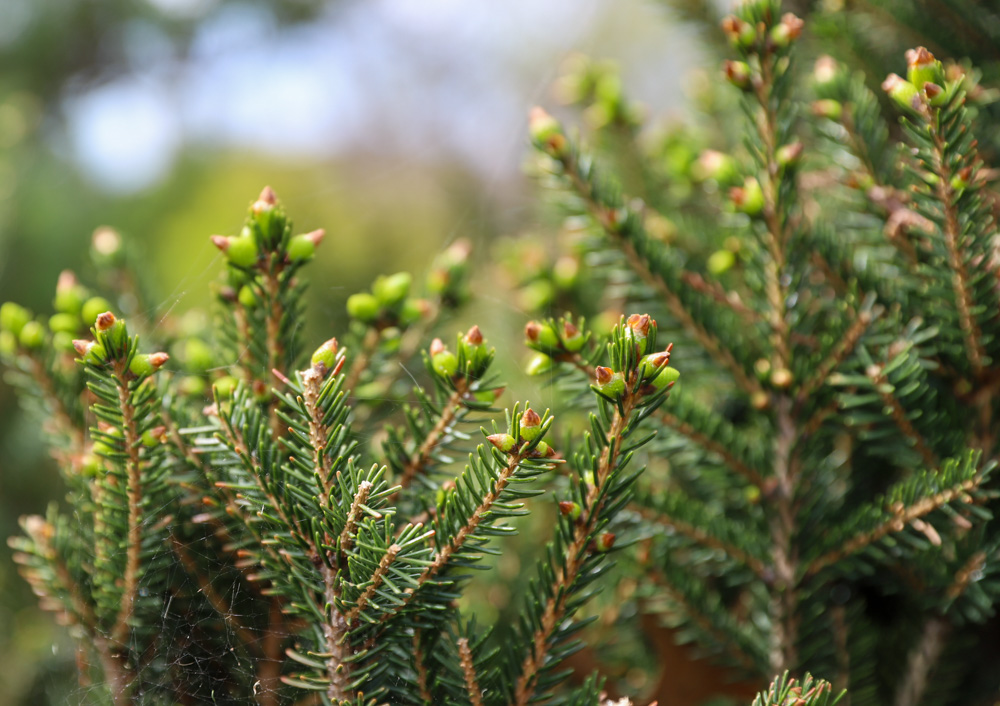
Living botanical collections play a crucial role in current research and future plant preservation. These collections are fundamental to propelling our understanding of the natural world forward.
Powell Gardens, Kansas City’s botanical garden, maintains numerous collections, which further serves our mission to be an experience that embraces the Midwest spirit of place and inspires appreciation of plants in our lives.
Powell Gardens is a living museum with a rapidly growing collection. With more than 21,000 plants on record, the Gardens has amassed data that is important for long-term planning and as a reference tool.
Through a grant in 2020, the Powell Gardens’ collection moved to a platform allowing public access. Explore our living collection, features, and garden tours online with Garden Explorer.
Featured Collections
Magnolia Collection
Magnolias are one of the most spectacular hardy flowering trees. Powell Gardens’ magnolia collection is certified by the American Public Gardens Association’s Plant Collections Network (formerly North American Plant Collections Consortium). This program is significant within the continent-wide plant community due to their approach to plant germplasm preservation and plant collections management.
Plant germplasm preservation is defined as “preservation of genetic material (plants, seeds, tissues for conservation or other societal purposes. ex situ in seed banks/labs or in situ botanical gardens/ natural parks,” (‘Breeding genetics and biotechnology’ C.A. Offord ‘Encyclopedia of Applied Plant Sciences, Second Edition, 2017).
Found along the Dennis & Annette Young Magnolia Walk near the Visitor Center, Powell Gardens maintains a beautiful magnolia collection, including several cultivars of saucer magnolia (Magnolia soulangeana).
The saucer magnolia was originally bred in the early 1800s by cross-breeding yulan magnolias (Magnolia denudata) and lily magnolias (Magnolia liliiflora). Known for their goblet-shaped flowers and fragrant aroma, saucer magnolias are one of the most popular deciduous magnolias.
Check out a few more special features from this collection below!
Magnolia stellata ‘Rosea’ is commonly known as the pink star magnolia.
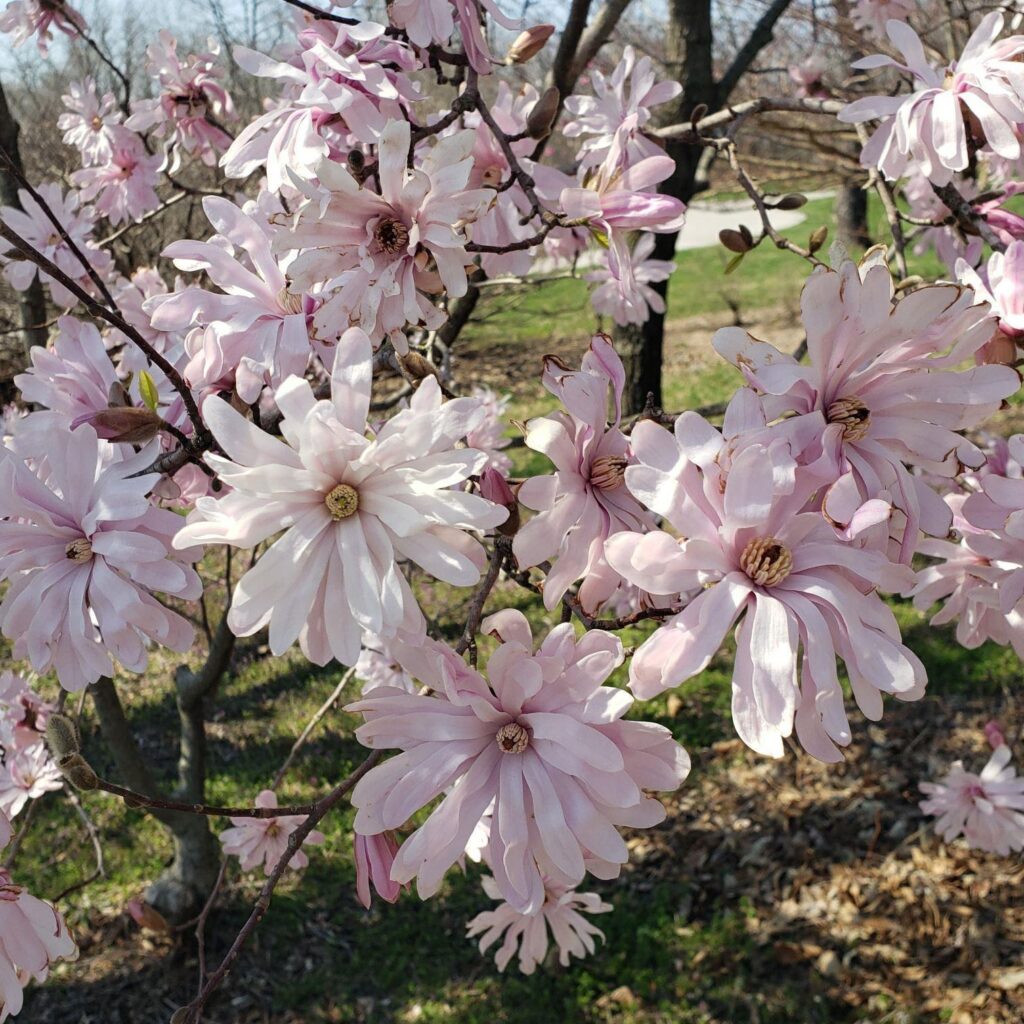
Magnolia loebneri ‘White Rose’ is commonly known as the white rose magnolia.
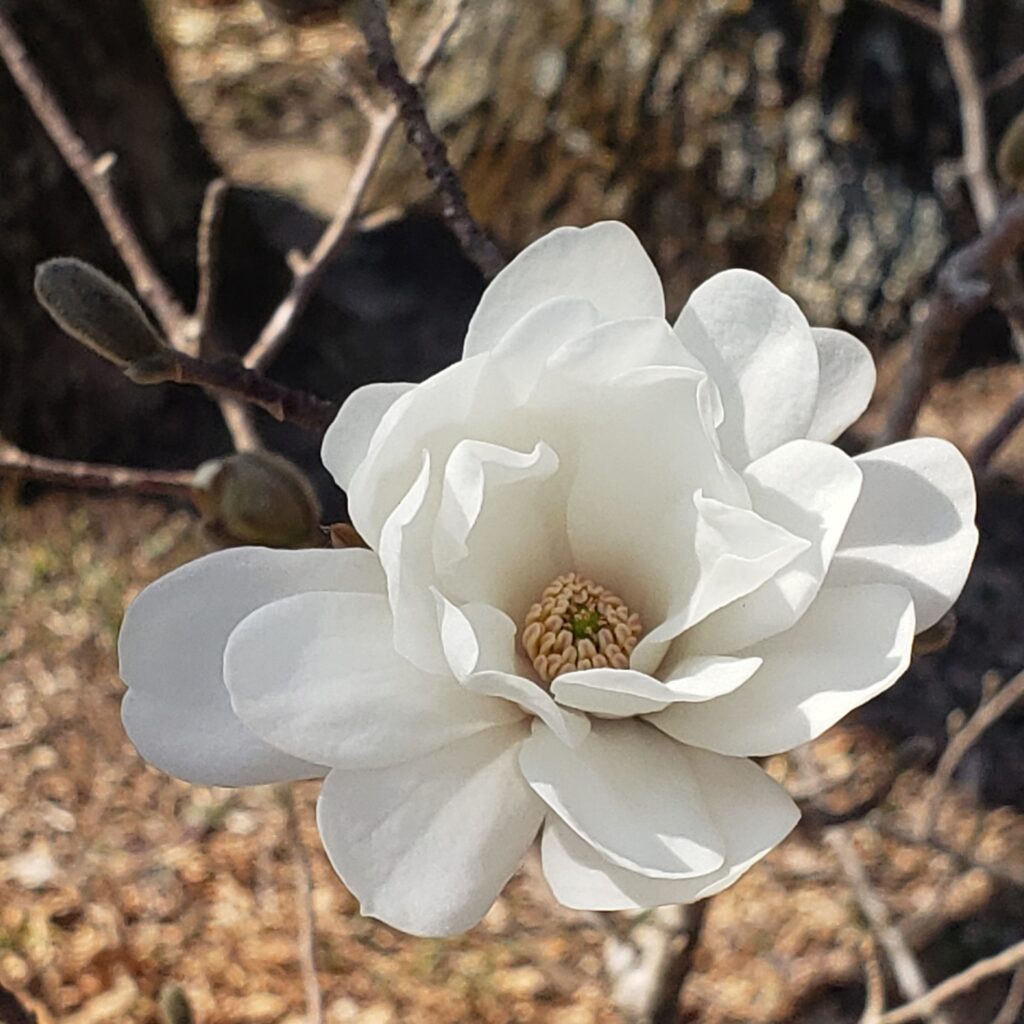
Magnolia kobus is commonly known as the kobus magnolia.
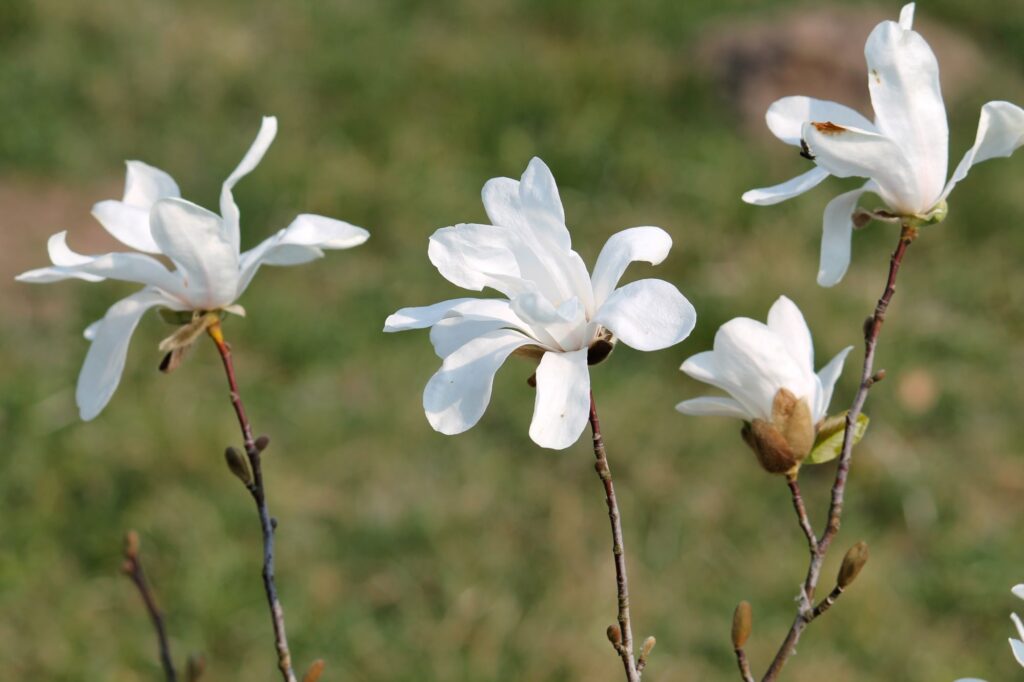
How do I interact with this collection?
This collection is best viewed during the spring season along the Dennis & Annette Young Magnolia Walk. Painted Garden is the perfect excuse to take a stroll through this gorgeous collection while also viewing new and returning art installations along the way.
Don’t forget to check out the magnolia digital tour in Garden Explorer!
Cacti and Succulents Collections
Arid plants are suited to environments that receive little rainfall. They often store water in plan tissue or a hollow center. One of the best ways to view Powell Gardens’ arid collection is in Garden Galleries.
Inside, visitors will find a Crevice Garden with a display that mimics the natural habitat of cacti and succulents by incorporating rockier and desert environments. Plants are placed in between pieces of flagstone to give it the true feeling of a Crevice Garden. While exploring the Crevice Garden, pay attention to the outer walls where gardeners hand crafted living walls using succulent plants as a medium.
Examples of what visitors may expect to find in this collection include popular plants such as jade, sedum, and golden barrel cactus. However, there are plenty of lesser-known, unique cacti and succulents within this collection. Check out a few more examples from this collection below!
Kleinia stapeliiformii is commonly known as the pickle plant. An unusual plant even by succulent standards, it spreads through the ground sending up a lot of “pickle” like stems that can get around a foot tall.
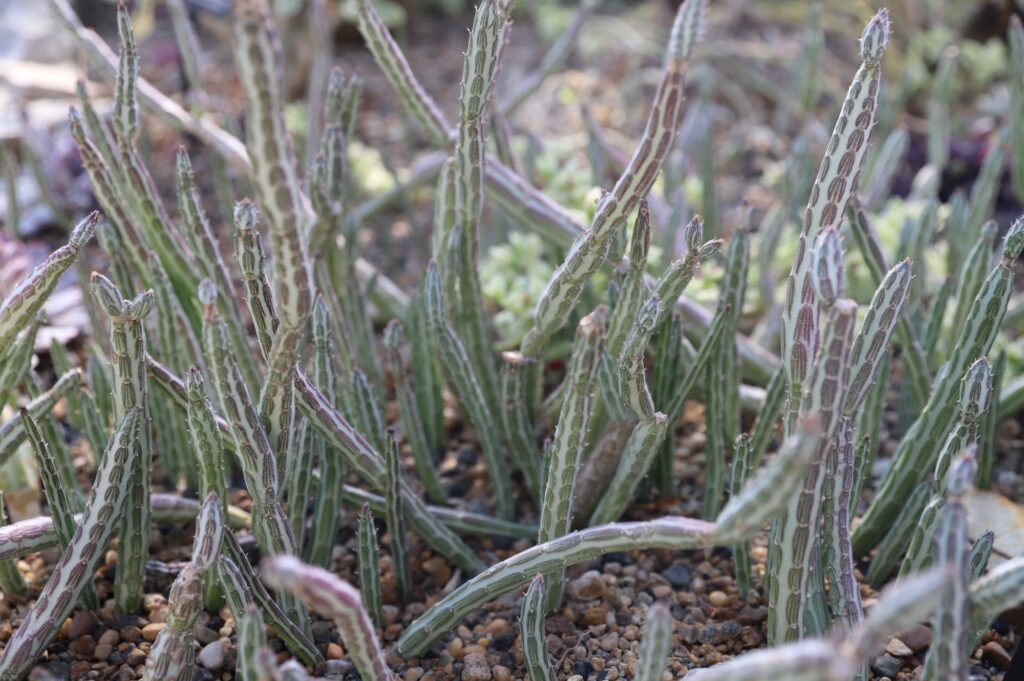
Cylindropuntia fulgida is commonly known as the jumping cholla cactus. This cactus is native to areas of Arizona and northern Mexico. It is known for having their “arms” fall off and get stuck into any innocent bystander.
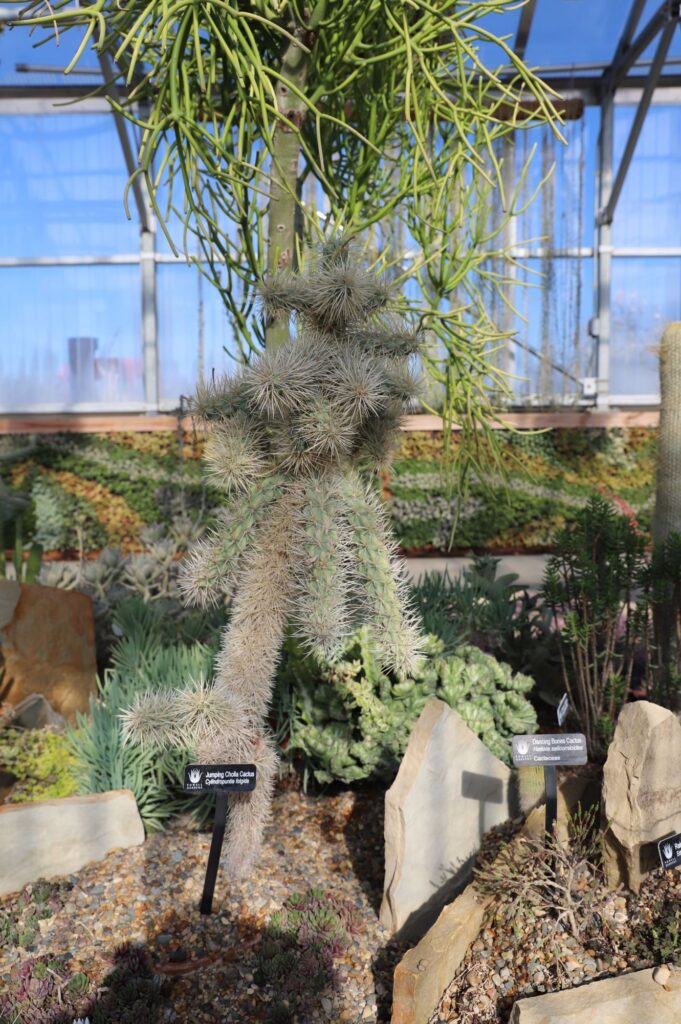
Pachypodium geayi is commonly known as the Madagascar palm. Native to Madagascar, this palm can reach heights up to 20’ making it the largest of its genus.
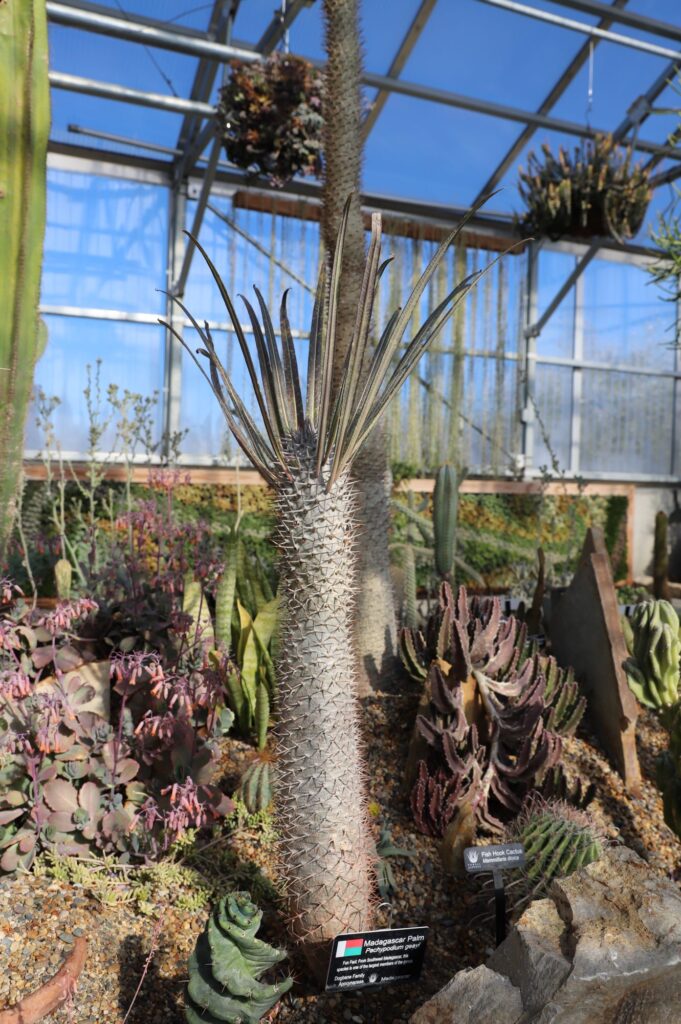
How do I interact with this collection?
Aside from a stroll through Garden Galleries on your next Powell Gardens visit, Desert Days is another great opportunity to interact with this collection! Look for creative displays, including the Crevice Garden, living walls, and combination containers in Garden Galleries.
Don’t forget to check out the cacti and succulent digital tour in Garden Explorer!
Waterlily and Lotus Collections
Powell Gardens’ waterlily and lotus collections are certified by the International Waterlily and Water Gardening Society. Waterlilies and lotus are often confused as interchangeable, when these two plants belong to completely different plant families!
Waterlilies (Nymphaeaceae) possess thick and waxy leaves with a prominent notch. The flowers, also thick and waxy, have a noticeable v-shaped point to their petals, creating a star-shaped bloom.
The best way to view Powell Gardens’ waterlily collection is stopping by the Marlese Lowe Gourley Island Garden. This location includes not only serene, tiered pools with a diverse array of aquatic plants and designed garden beds but also includes stunning lakeside views.
Missouri has one species of native waterlily known as the American white waterlily (Nymphaea odorata) that occurs in pockets throughout the state. Mature plants can grow in water almost eight feet deep. Floating leaves provide habitat for aquatic invertebrates, which, in turn, provide food for small fish and other aquatic animals while providing shelter from some predators.
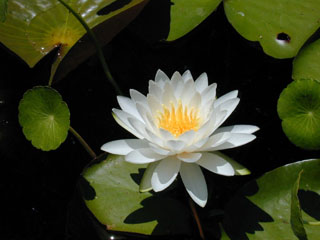
Another notable mention from this collection are giant waterlilies in the genus Victoria, which is commonly known as the Victoria waterlily. Native to regions of South America, there are three known species boliviana, amazonica, and cruziana along with several horticultural hybrids/cultivars.
These plants have sharp, painful prickles along their stems (petioles), flower stem/outer covering of flower (peduncles and calyx), and leaf undersides. These provide a competitive advantage as they shred other aquatic vegetation as they spread out. Victorias may have developed this defense because they evolved alongside manatees, which are deterred from feeding on the plant by the prickles.
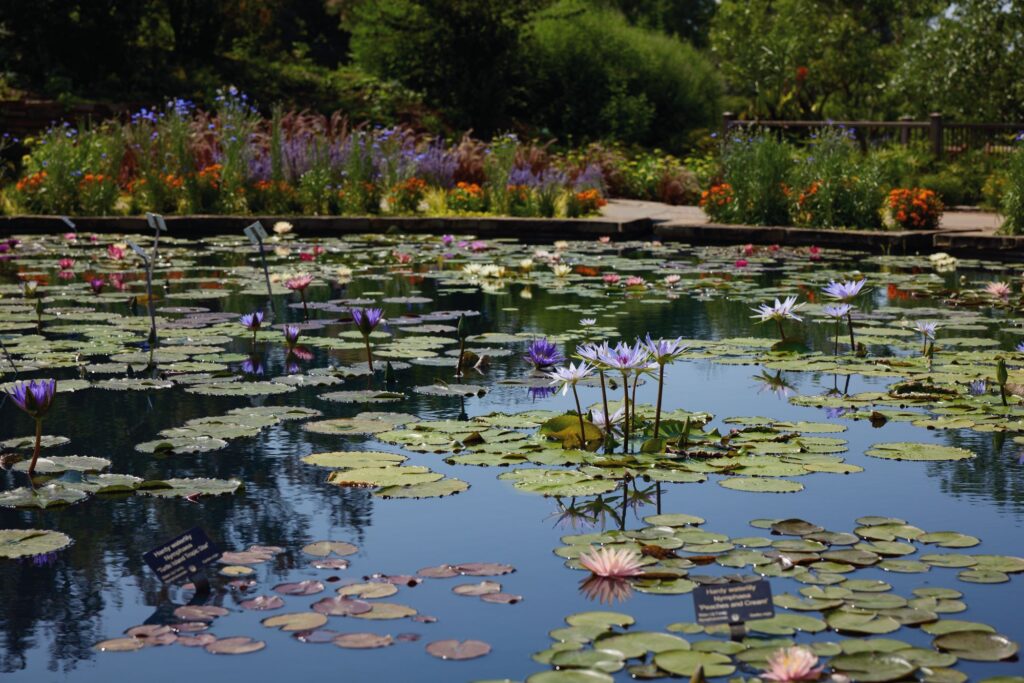
On the other hand, lotus (Nelumbonaceae) possess thin, almost papery, leaves and flowers. Their petal shape tends to be more rounded.
Missouri’s native lotus is the American lotus (Nelumbo lutea). This aquatic plant has an edible tuber and white/yellow flowers nearly a foot wide. Late July along the Family Discovery Loop is the perfect opportunity to capture the magnificence of these unique aquatic plants.
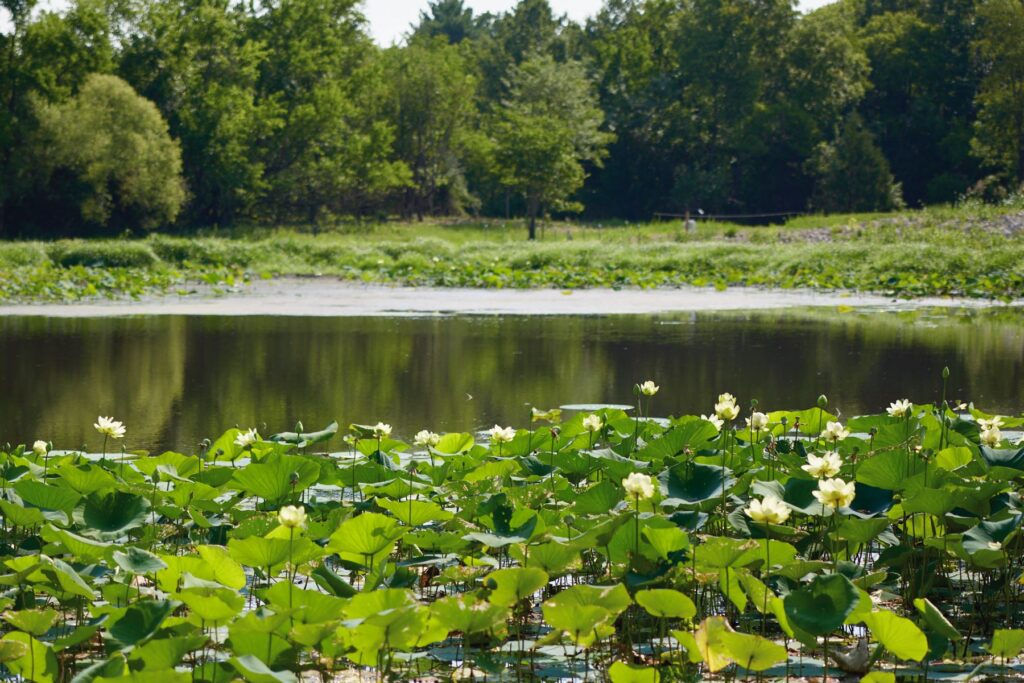
How do I interact with this collection?
Waterlily Wonders is a celebration of peak bloom in the Marlese Lowe Gourley Island Garden containers and pools. Check out these certified collections and see if you can spot the differences between waterlilies and lotus!
Don’t forget to check out the aquatic plant collection digital tour in Garden Explorer!
Conifer Collection
Powell Gardens’ conifer collection is located in the Conifer Garden, which is an accredited reference garden by the American Conifer Association. Conifers, or Coniferae, are a group of woody plants, made up mostly of evergreen trees and shrubs with leaves that are needle-like, though some are scaled. Perhaps their most well-known features are their cones, or pinecones.
All conifers produce cones, though they can vary greatly in appearance – many are woody and with rings of fish-like scales while some, like the little red ‘berries’ of Yews, don’t seem like cones at all. Many conifers, especially spruce and firs, also produce ‘tips’ which are their yearly new growth which often appear as small bunches of lighter, smaller, and more flexible needles. These tips arrive in the late spring and fill our conifer garden with color and new life; it’s a beautiful time to spend a moment exploring the garden.
Check out a few more special features from this collection below!
Picea pungens ‘Blue Pagoda’ is commonly known as the blue pagoda Colorado spruce.
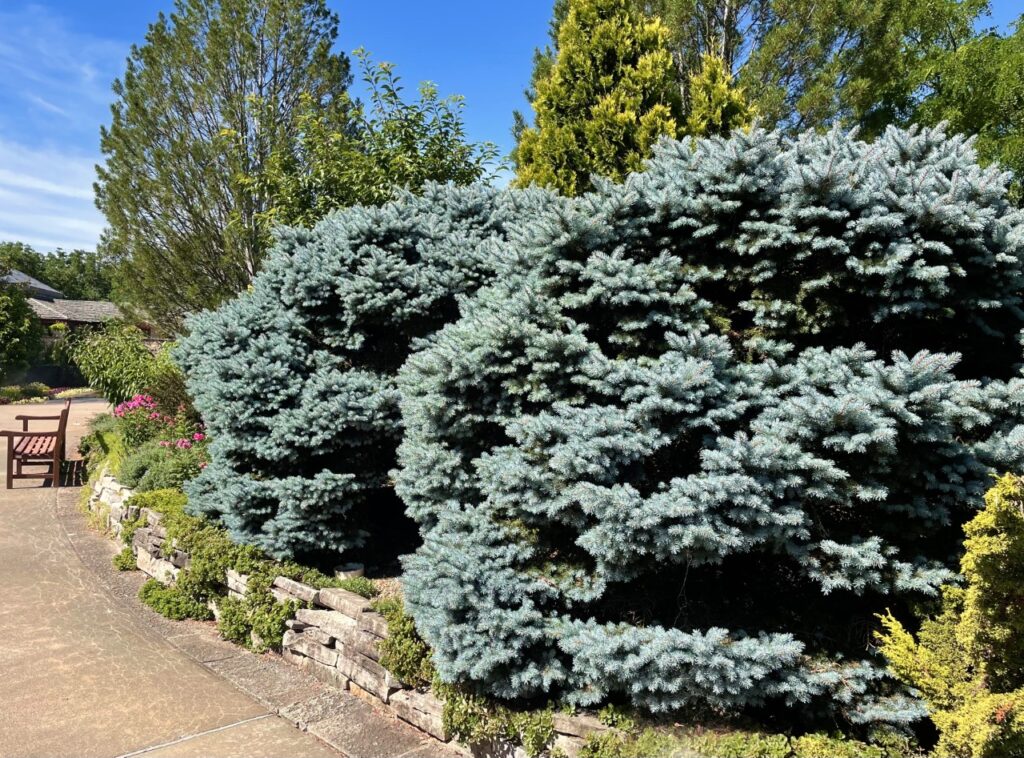
Picea abies ‘Acrocona’ is commonly known as Acrocona Norway spruce or Norway spruce.
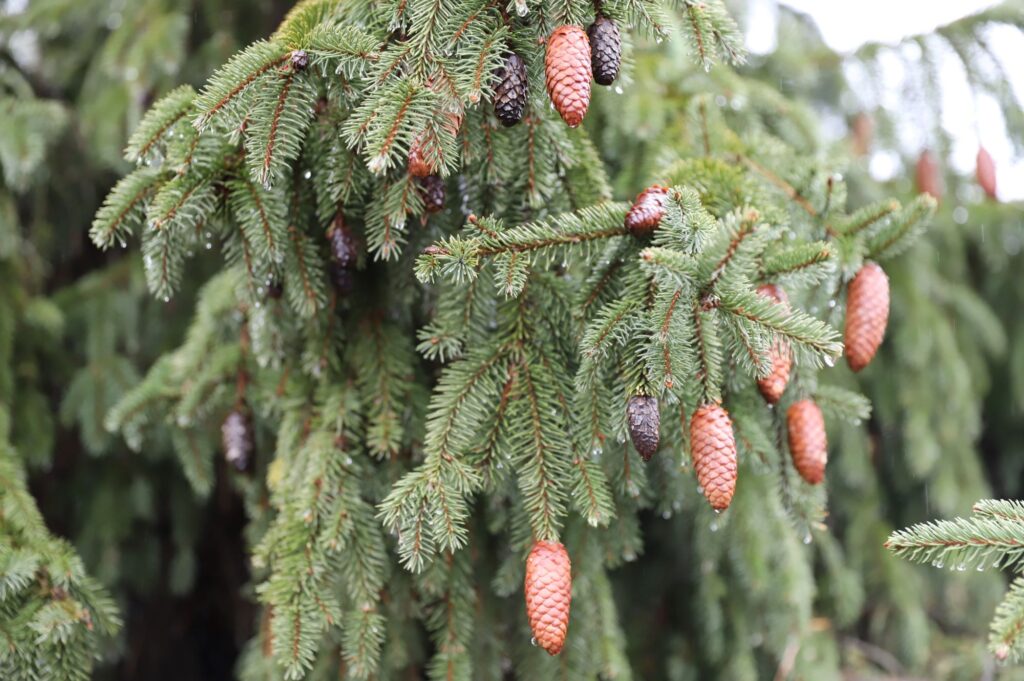
Pinus parviflora ‘Ogon Janome’ is commonly known as Japanese white pine.

Marvin Snyder, an avid gardener and past president of the American Conifer Society, donated a unique collection of specialty and dwarf conifers to be installed in the landscape directly adjacent to the Visitor Center’s east terrace.
Almost all hardy genera of conifers from around the world are represented including firs, plum-yews, false cypresses, ginkgo, junipers, spruces, pines, arborvitae, Doug-firs, bald cypresses, yews, and hemlocks. The sandstone rubble and subsoil excavated from the construction of the Fountain Garden was repurposed for this garden and provided the perfect base for well-draining soil preferred by conifers.
This collection offers visitors beautiful foliage textures and colors in all seasons. It also encourages their use in home landscape as an alternative to the ubiquitous sheared foundation yews and junipers so often planted around homes in Greater Kansas City and the surrounding suburban areas.
How do I interact with this collection?
Conifer Tips the perfect opportunity to view this collection. However, the best part about Powell Gardens’ conifer collection is simply the fact that there’s always something special to view in every season.
Don’t forget to check out the conifer digital tour in Garden Explorer!
Collections Partners
Not only do these collections hold a special place in the horticulture community, they’re crucial to preserving the Midwest spirit of place for future generations. In fact, Powell Gardens is a nonfederal cooperator of the Plant Conservation Alliance and works with a variety of like-minded partners such as the Missouri Department of Conservation, Missouri Prairie Foundation, National Audubon Society, and more!
Whether it’s your first time or 100th time visiting Powell Gardens, Kansas City’s botanical garden, your visit reinforces why botanical gardens and botanical collections are vitally important. We sincerely thank you!
*Don’t forget to check out our seasonal class offerings for additional ways to learn more and interact with these important botanical collections!
Related Posts


